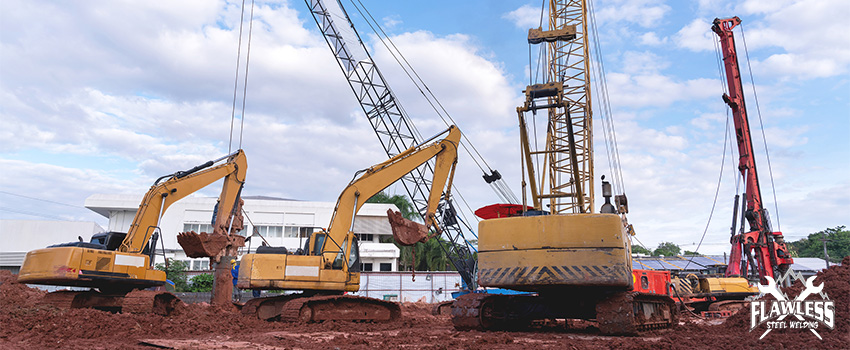When you pass by a construction site and see a tower crane, you might ask yourself the question, “How do people erect a tower crane?”
Despite tower cranes being common construction equipment that people see almost every day, many are still wondering how they are erected and dismantled. If you want to know how the construction of a tower crane is executed, read on to learn more!
Erection and Dismantling of a Tower Crane
To answer the question, people do not directly erect tower cranes. Their sections are too heavy for people to lift, so other equipment is still necessary.
Small tower cranes are erected using a mobile crane, which is larger in size. However, that is not always the case, mainly when the construction project is a high-rise building or a skyscraper.
The process of erecting and dismantling tower cranes is called climbing. It refers to adding and removing sections of the mast—the central tower of the crane made up of vertical steel trusses—so the overall height is either increased or decreased.
Step 1
The first step is to prepare a stable, concrete foundation with steel reinforcements. This step needs to be executed at least one month before the erection of a crane starts to ensure that the concrete has enough curing time and reaches its ultimate strength.
Step 2
After that, a crane is erected to an initial height using mobile cranes. The first section of the mast should be properly positioned and secured on top of the foundation using anchor bolts. Then, additional sections are stacked on top of one another and fastened using high-strength steel bolts until the desired initial height is reached.
Step 3
The next step involves having a slewing unit assembled and attached on top of the mast. The slewing unit is a turntable responsible for allowing the top part of the cranes to rotate. In addition, it will also be the base for both the lifting components and the operator’s cab.
Step 4
A cathead is then installed above the slewing unit, followed by the counter jib and the working jib. The two jibs, positioned opposite each other and are connected with steel tie rods, are attached at the top of the cathead. The primary function of the rods is to help those jibs transfer the load they need to carry to the mast of the crane.
Step 5
Once the assembly at the top of the mast is completed, counterweights in concrete slabs are attached to the counter jib. This process is done to help balance the loads carried by the crane when lifting other heavy things. After those steps are completed and the initial height is reached, the crane is ready.
Step 6
However, the initial height assembled through mobile cranes is limited and will not lift things when constructing high-rise buildings and skyscrapers.
The steel climbing frame is assembled around the mast base and then lifted until it is already below the slewing unit. It is fastened using high-strength steel bolts at the top, while a hydraulic cylinder jack at its bottom is positioned above a push point on the mast.
The steel climbing frame has a lattice structure on three sides, leaving the remaining side open—this is where new mast sections will pass through once additional height is needed.
Step 7
The next step involves having a new mast section lifted to the frame. During this step, ensuring the crane stays perfectly balanced is essential. Once secured and confirmed, the hydraulic cylinder jack is pressurized to carry the weight of the top assembly of the crane while the slewing unit is temporarily unbolted.
The hydraulic cylinder jack will be responsible for lifting the frame until there is enough opening for the new mast section to be inserted. Once inserted, the new section is then bolted.
Step 8
After inserting a new mast section, the hydraulic cylinder jack will be depressurized and repositioned on the next push point. Then, the crew can repeat the whole cycle until the desired height is reached.
Step 9
For the tower crane dismantling process, the crew can repeat all the procedures and steps discussed. However, the goal this time around is not to add new mast sections but to remove the existing ones. Like what is mentioned above, the climbing process of a crane includes increasing and decreasing its height. So, that is how new mast sections are added to or removed from the existing crane.
The climbing process seems like a basic concept, yet it is challenging to execute on construction sites. Many things have to be considered, such as tower crane erection safety and tower crane dismantling safety.
If you need assistance with tower cranes for your construction projects, we can help you at Flawless Steel Welding. We provide crane services and other steel-related services such as steel erection and steel fabrication in Colorado Springs. Feel free to hit us up for more details!




